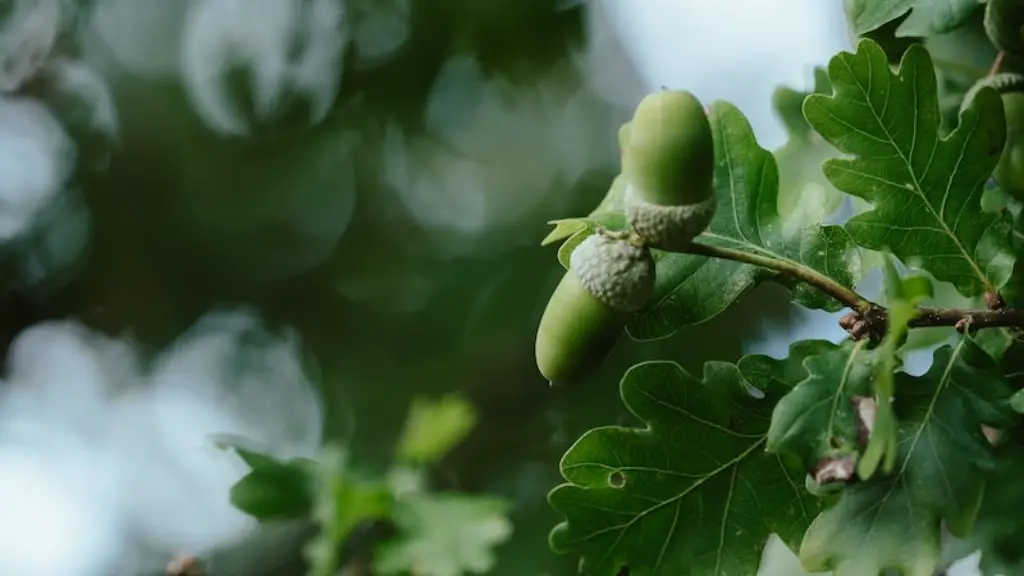Introduction
Avocado trees are a valuable addition to any garden. With their attractive leaves, fragrant blooms and delicious fruits, they can make a great contribution to any landscape. But before planting an avocado tree, it is important to think about the right zone for it. The right zone can help you to make sure the tree remains healthy and vigorous and produces plenty of fruit.
Growing Conditions
In order to determine the best zone for an avocado tree you need to consider its growing conditions. Avocados are native to Central America and are quite sensitive to cold. They will thrive in mild climates with temperatures above 55°F and preferably in temperatures that average between 70 and 85°F. In general, the vast majority of avocado trees will thrive best in zones 8 through 10, although there are some varieties that can do well in zones 7 and 11.
Soil Requirements
It’s also important to consider the soil requirements for an avocado tree. Avocados prefer sandy, well-draining soil with plenty of organic matter. They don’t like wet soils, so if you live in a wet climate you may want to consider growing your avocado tree in a pot to prevent root rot.
Water Requirements
Avocados need plenty of water to thrive. Generally, they need at least an inch of water a week to stay healthy, although they may need more in hot, dry climates. Avoid over-watering, though, as this can lead to root rot.
Other Considerations
In addition to the soil and water requirements, there are a few other things to think about when choosing the right zone for your avocado tree. The amount of sunlight the tree will receive is an important factor, as avocado trees need lots of sun. And when choosing a variety, you want to pick one that will thrive in your zone. Some varieties are more cold-tolerant than others, so make sure to research your options thoroughly.
Disease and Pests
In addition to choosing the right climate and variety, you also need to consider the potential for disease and pests. Avocados are susceptible to a number of diseases, including root rot and verticillium wilt, and a number of pests, such as mealybugs, aphids and scale. To avoid these problems, make sure to choose a variety that is resistant to common diseases and pests in your area, as well as one that is appropriate for your climate.
Conclusion
When choosing a zone for an avocado tree, it’s important to consider the climate, soil and water requirements, the amount of sunlight it will receive, the potential for disease and pests, and to choose a variety that is right for your climate. With the right combination of factors, you can ensure that your avocado tree will thrive and produce delicious fruits.
Protecting Avocado Trees
When choosing a zone for an avocado tree, it’s important to consider what steps you’ll take to protect it from the elements. Planting in a sheltered location and providing windbreaks around the tree are both beneficial if windy conditions are likely. Additionally, avocado trees are sensitive to frost and other cold weather, and should be planted in an area that receives full sun during the day to help the tree better withstand colder temperatures.
Pruning an Avocado Tree
Proper pruning is key to encouraging healthy growth and abundant fruit production of an avocado tree. When pruning your tree, pay attention to dead, diseased and crossing branches, and try not to remove too much living wood from larger branches. Smaller shoots can be trimmed back to encourage even growth, and it’s best to prune during the winter when the tree is dormant.
Fertilizing Avocado Trees
Fertilizing is also important to keep an avocado tree healthy and producing fruit. In most cases, an all-purpose fertilizer containing nitrogen, phosphorus and potassium will provide all the nutrients the tree needs. Once a year, in the spring, the tree should be fertilized with a slow-release fertilizer according to package directions. Additionally, avocado trees benefit from a top-dressing of compost in the spring.
Harvesting Avocado Fruit
Harvesting avocado fruit is a rewarding process, as long as you time it correctly. Avocados are usually ready to harvest when they are 8-12 months old. When picking the fruit, look for ones that are soft to the touch and have a slightly yellowish green color. The fruits should come off the tree easily and should not be bruised. Once harvested, the fruit should be stored in a cool and dry place for up to 2 weeks before eating.

